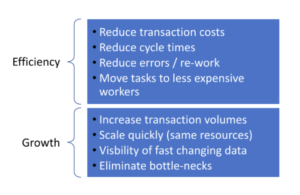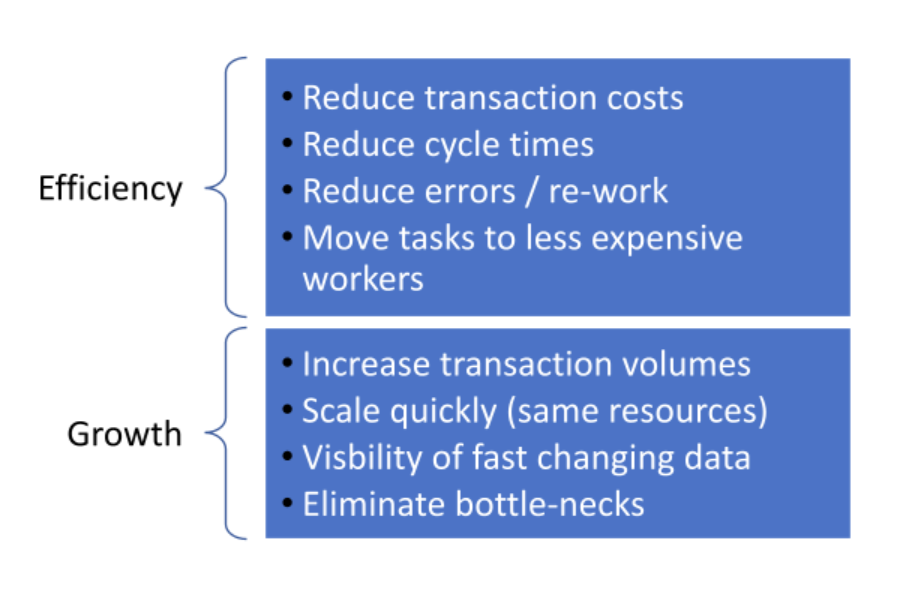Two Strategies Driving Automation

Two Strategies Driving Automation



Naturally, we think there are lots of reasons to adopt a document lifecycle management solution, even if you only use a few of the core features. Still, it takes more than nice-to-have benefits for an organisation to start a document automation project. Our sales team notice two factors that lead to action rather than just interest:
#1 We need to become more efficient
#2 We need to grow
Both factors have this in common: no-change is not an option because the current operations are not meeting business requirements. Moreover, change is needed now. Stakeholders will want to avoid a complex implementation project.
When the need for change is self-evident, fewer people start looking for reasons to keep things the same, and the decision is about what to do, rather than whether to act.
When you must do something to achieve efficiency or growth, critical success factors include:
- Select a solution that you won’t outgrow – you probably won’t know what’s missing until it’s too late.
- Go for agile projects – most business operations are hard to define in precise detail. Expect the solution to evolve.
- Select a solution designed for document lifecycle management – don’t try to re-purpose generic office applications. Solutions like Legito also give access to consultants who can help you succeed.
- Check case studies for organisations of your size – ask the vendor to introduce you to similar customers. Get a candid assessment from someone who has been there already.
If efficiency is your driver, pause to reflect on your current documents and processes. Don’t automate poorly drafted documents. Don’t use technology to prop up a flawed process. If you are considering Legito, our consultants have enough real-world experience to help you avoid a project which will only magnify current problems.
Naturally, we think there are lots of reasons to adopt a document lifecycle management solution, even if you only use a few of the core features. Still, it takes more than nice-to-have benefits for an organisation to start a document automation project. Our sales team notice two factors that lead to action rather than just interest:
#1 We need to become more efficient
#2 We need to grow
Both factors have this in common: no-change is not an option because the current operations are not meeting business requirements. Moreover, change is needed now. Stakeholders will want to avoid a complex implementation project.
When the need for change is self-evident, fewer people start looking for reasons to keep things the same, and the decision is about what to do, rather than whether to act.
When you must do something to achieve efficiency or growth, critical success factors include:
- Select a solution that you won’t outgrow – you probably won’t know what’s missing until it’s too late.
- Go for agile projects – most business operations are hard to define in precise detail. Expect the solution to evolve.
- Select a solution designed for document lifecycle management – don’t try to re-purpose generic office applications. Solutions like Legito also give access to consultants who can help you succeed.
- Check case studies for organisations of your size – ask the vendor to introduce you to similar customers. Get a candid assessment from someone who has been there already.
If efficiency is your driver, pause to reflect on your current documents and processes. Don’t automate poorly drafted documents. Don’t use technology to prop up a flawed process. If you are considering Legito, our consultants have enough real-world experience to help you avoid a project which will only magnify current problems.
More Weekly Articles




















